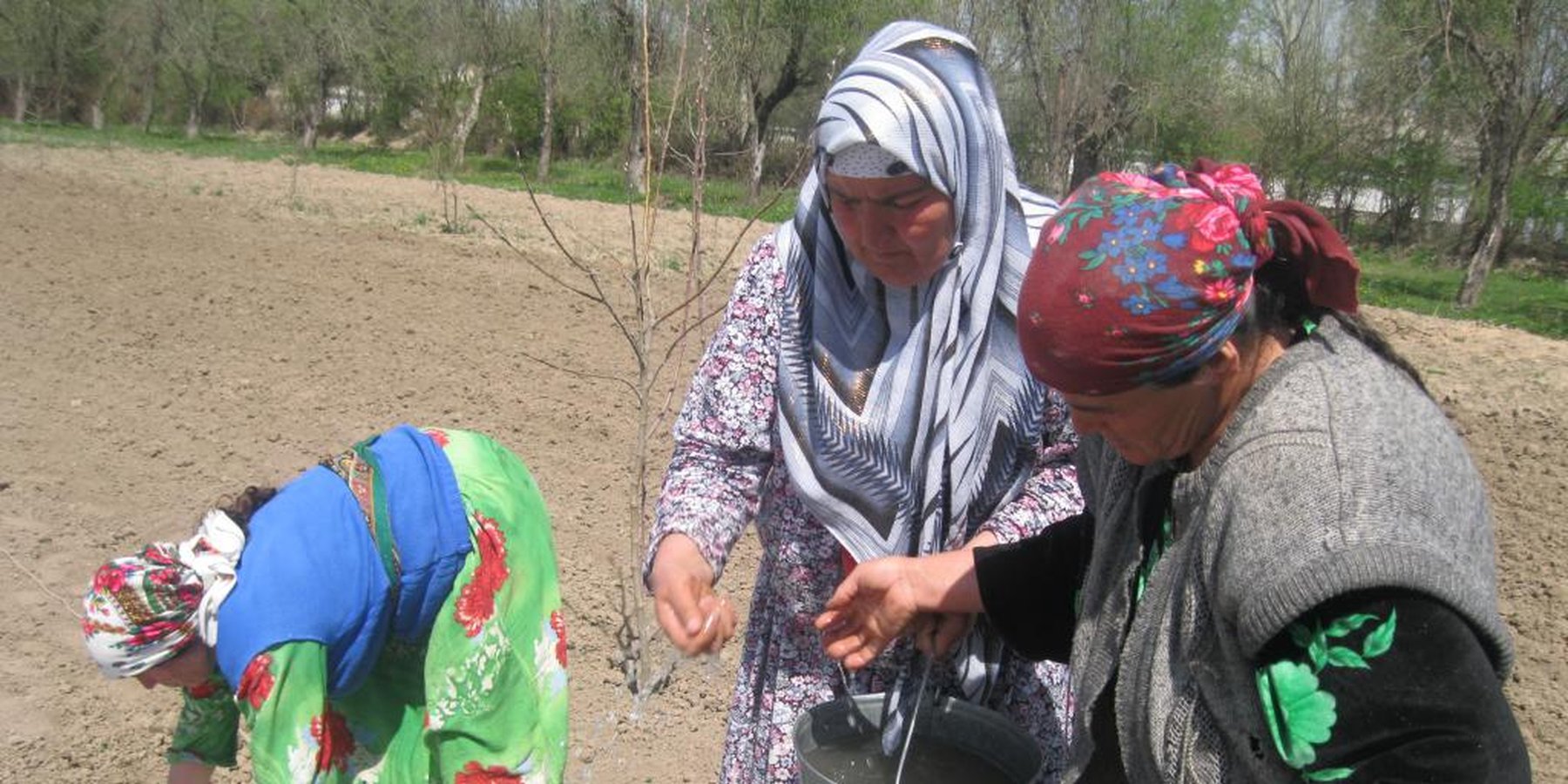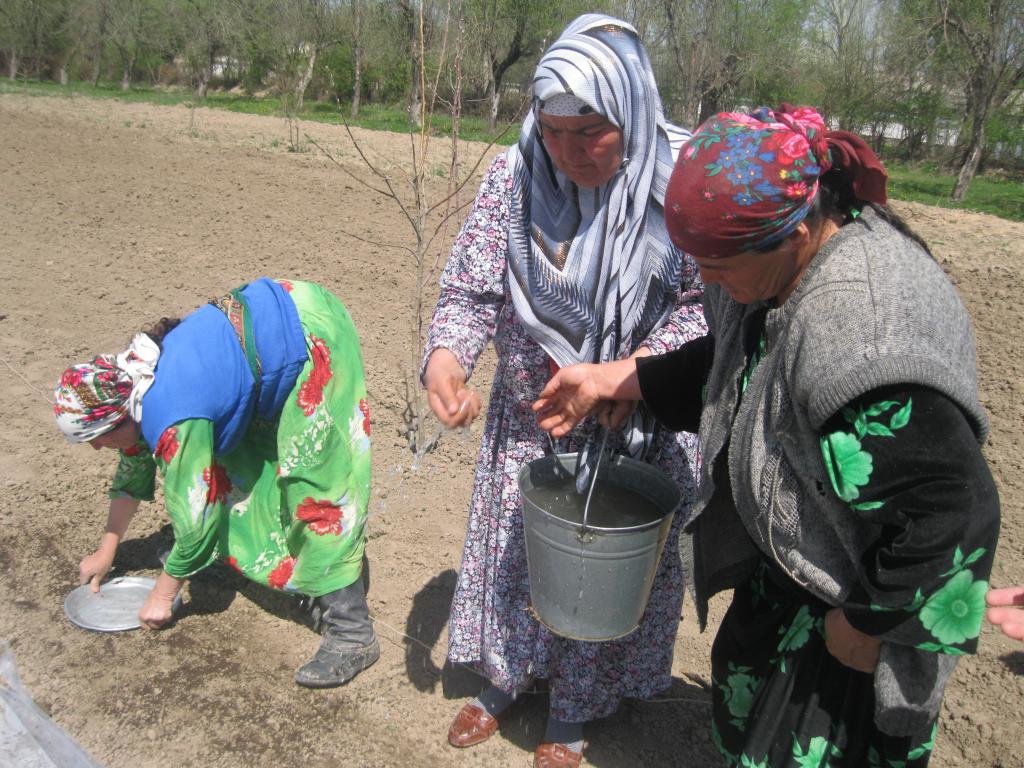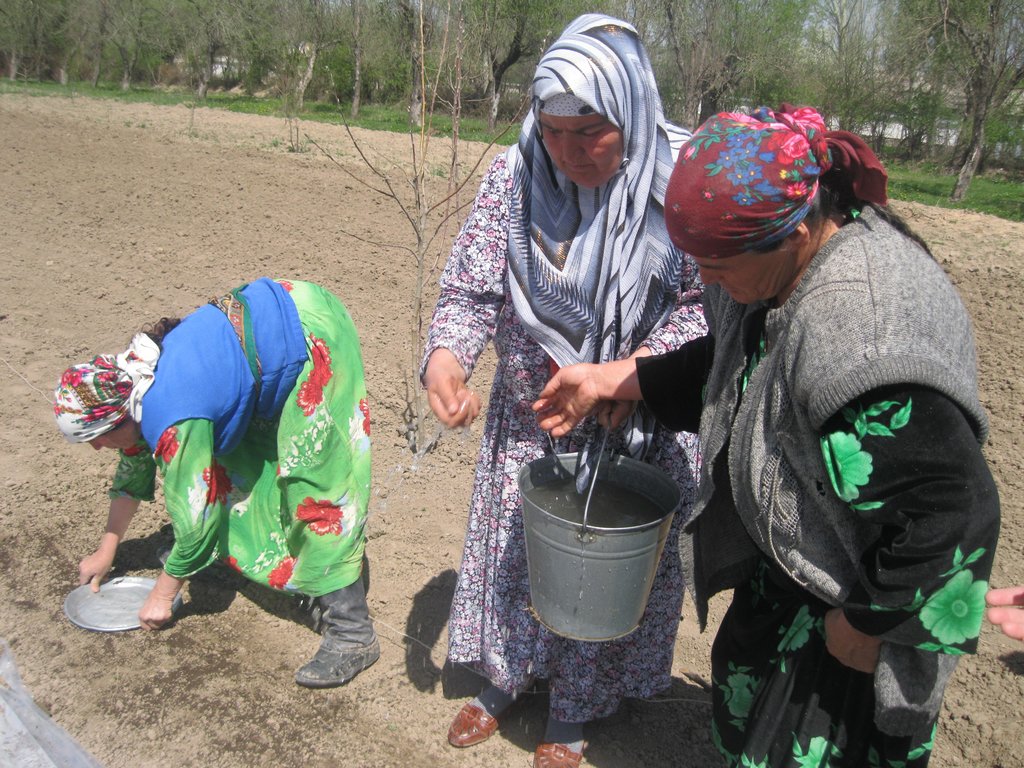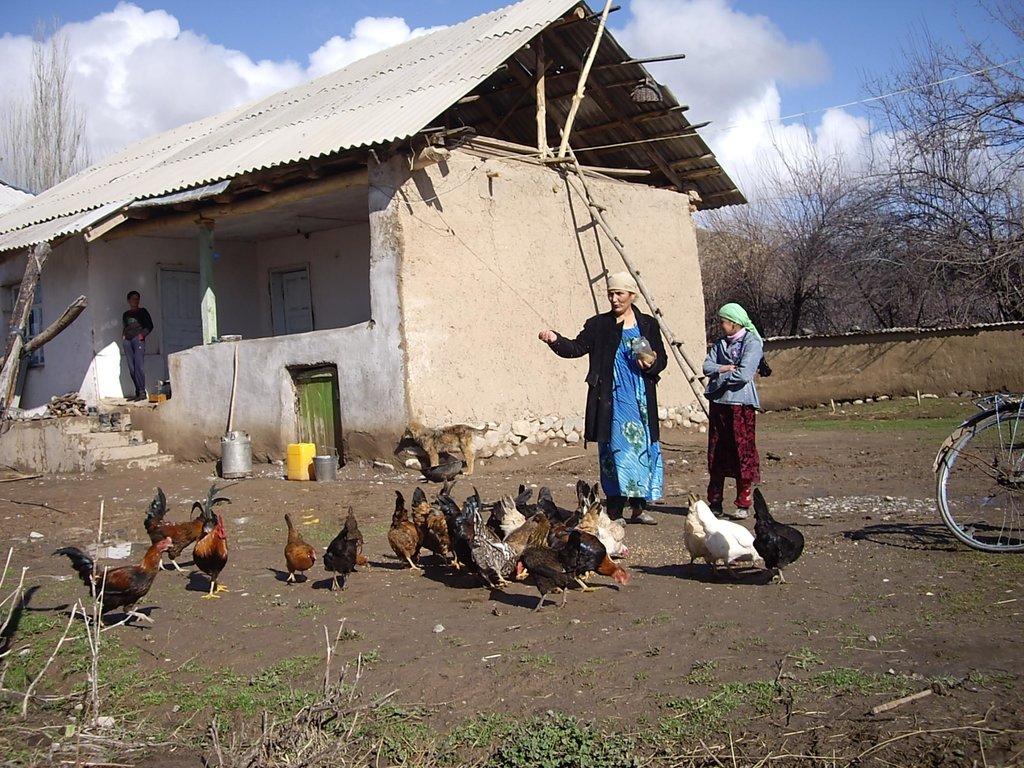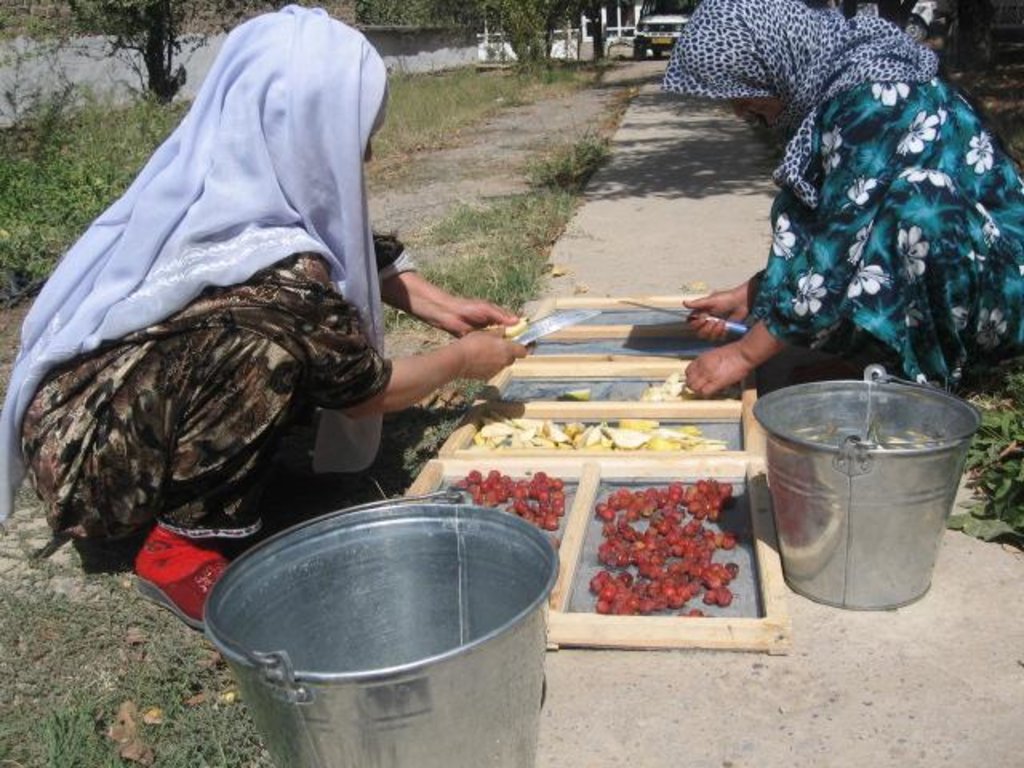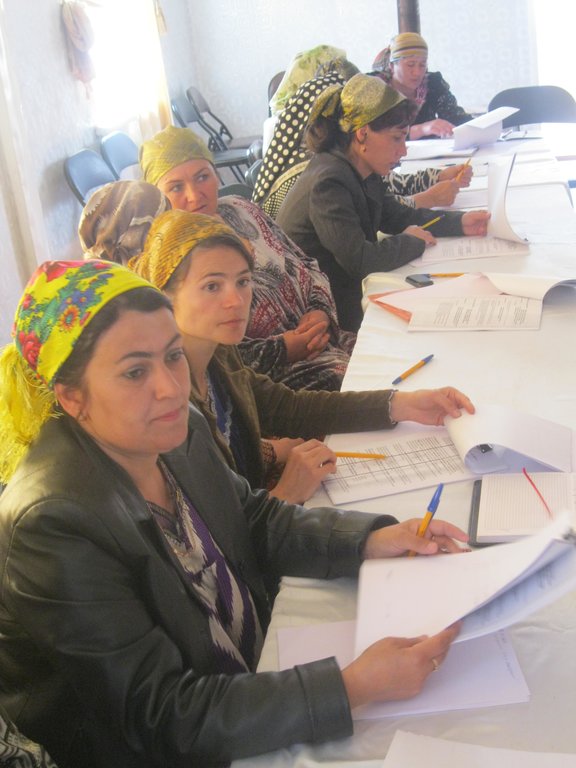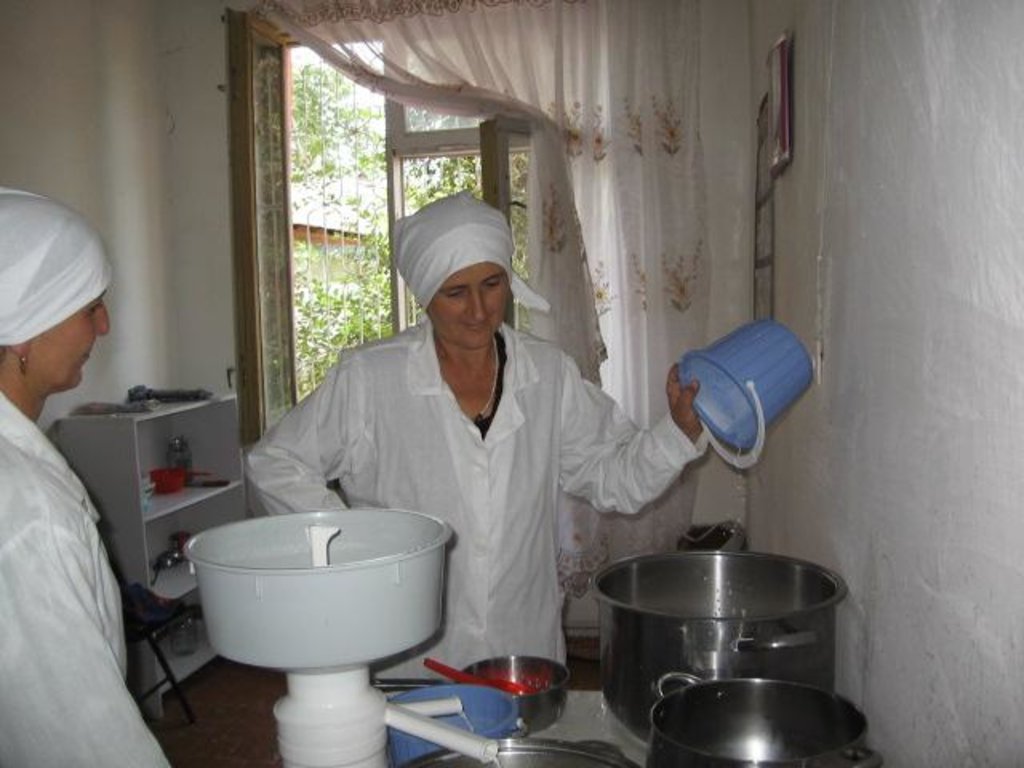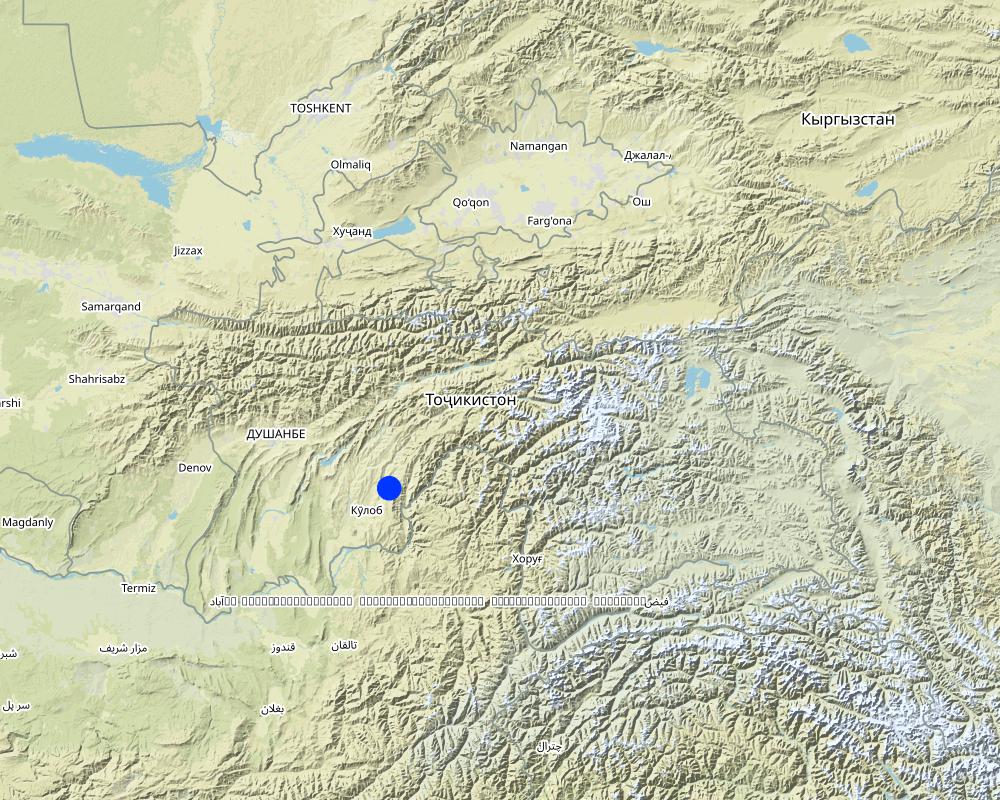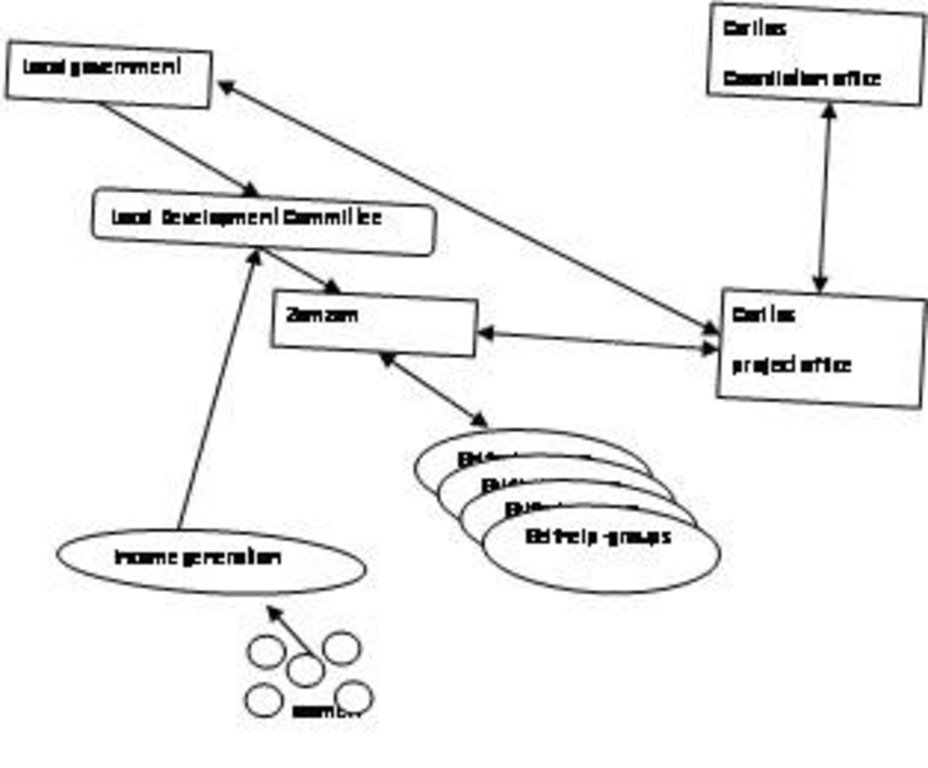Public Women's Organisation Zamzam - enhancing incomes for poor women through income generation activities [ຕາຈິກິສະຕານ]
- ການສ້າງ:
- ປັບປູງ:
- ຜູ້ສັງລວມຂໍ້ມູນ: Lisa Gampp
- ບັນນາທິການ: –
- ຜູ້ທົບທວນຄືນ: David Streiff, Alexandra Gavilano, Joana Eichenberger
approaches_2438 - ຕາຈິກິສະຕານ
- ສະຫຼຸບສັງລວມຢ່າງທັງໝົດທີ່ເປັນ PDF
- ສັງລວມເປັນບົດ PDF ເພື່ອສັ່ງພິມ
- ສັງລວມເປັນບົດ ຢູ່ໃນ browser
- ບົດສະຫຼຸບ ສະບັບເຕັມ (ບໍ່ມີແບບຟອມ)
- Public Women's Organisation Zamzam - enhancing incomes for poor women through income generation activities: July 6, 2017 (inactive)
- Public Women's Organisation Zamzam - enhancing incomes for poor women through income generation activities: Aug. 9, 2017 (inactive)
- Public Women's Organisation Zamzam - enhancing incomes for poor women through income generation activities: Nov. 2, 2021 (public)
ເບິ່ງພາກສ່ວນ
ຂະຫຍາຍທັງໝົດ ຍຸບທັງໝົດ1. ຂໍ້ມູນທົ່ວໄປ
1.2 ລາຍລະອຽດ ການຕິດຕໍ່ ຂອງບຸກຄົນທີ່ຊັບພະຍາກອນ ແລະ ສະຖາບັນ ການມີສ່ວນຮ່ວມ ໃນການປະເມີນຜົນ ແລະ ເອກະສານ ຂອງວິທີທາງ
ຜູ້ຊ່ຽວຊານ ດ້ານການຄຸ້ມຄອງ ທີ່ດິນແບບຍືນຍົງ:
ຜູ້ຊ່ຽວຊານ ດ້ານການຄຸ້ມຄອງ ທີ່ດິນແບບຍືນຍົງ:
Burkhanova Navzuna
mburkhaonva@caritas.ch
Caritas Switzerland in Tajikistan
Pavlova 20, Dushanbe
ຕາຈິກິສະຕານ
ຊື່ຂອງໂຄງການ ທີ່ອໍານວຍຄວາມສະດວກ ໃນການສ້າງເອກກະສານ ຫຼື ປະເມີນດ້ານແນວທາງ (ຖ້າກ່ຽວຂ້ອງ)
Pilot Program for Climate Resilience, Tajikistan (WB / PPCR)ຊື່ຂອງ ສະຖາບັນການຈັດຕັ້ງ ທີ່ອໍານວຍຄວາມສະດວກ ໃນການສ້າງເອກກະສານ ຫຼື ປະເມີນແນວທາງ (ຖ້າກ່ຽວຂ້ອງ)
CARITAS (Switzerland) - ສະວິດເຊີແລນ1.3 ເງື່ອນໄຂ ຂອງການນໍາໃຊ້ເອກກະສານຂໍ້ມູນ ຂອງ WOCAT
ຜູ້ສັງລວມ ແລະ ບັນດາຜູ້ຕອບແບບສອບຖາມ ຍອມຮັບໃນເງື່ອນໄຂ ການນໍາໃຊ້ຂໍ້ມູນເອກະສານ ທີ່ສ້າງຂື້ນ ໂດຍຜ່ານ ອົງການ WOCAT:
ແມ່ນ
2. ພັນລະນາ ແນວທາງການຄຸ້ມຄອງນໍາໃຊ້ດິນແບບຍືນຍົງ
2.1 ການອະທິບາຍ ໂດຍຫຍໍ້ ຂອງວິທີທາງ
The development of a women's network to disseminate information, provide training, and provide support to other women in the community to help them improve their livelihoods, and provide a forum by which women's issues can be raised at a local level.
2.2 ການອະທິບາຍ ລາຍລະອຽດ ຂອງວິທີທາງ
ການອະທິບາຍ ລາຍລະອຽດ ຂອງວິທີທາງ:
Aims / objectives: The overriding objective of the creation of a women's group was to provide an approach, by which activities could be implemented to improve the livelihoods of women in this rural region. Women are considered a vulnerable group due to high rates of labour migration by many men to Russia. This leaves the women behind, to care for the children, tend the kitchen garden, rear animals and other duties that they have limited experience and training in completing. The creation of a women’s network was seen as an opportunity to unite women, and provide them with trainings, skills and livelihood opportunities so that they could improve not only their standard of living but also that of their families. Zamzam was also designed to act as a focal point for voicing women's issues with local representatives and local government, and to help raise the profile of women in the decision making process.
Methods: The organisation, Zamzam was set up initially with funding from an INGO, via a project, however to remain as a viable women’s network, they have several paid staff, secure funding through membership fees and sell dairy products on the local market. The core staff have received support from Caritas and Voluntary Services Overseas (VSO) on areas like business planning, organisational development and marketing to encourage autonomy and sustainability in the future as financial support is withdrawn. In addition Zam Zam members are taught technical skills in dairy production, energy efficiency, soil conservation, basic farming techniques etc which are then taken back to the respective communities and conveyed back to the women of the community. This network creates a safe environment for learning, discussing and planning using the most active women members as conduits for the transfer of information and ideas.
Stages of implementation: The establishment of Zamzam follows a basic business model, whereby a board of directors is established to oversee the daily running of the organisation, periodically meeting to discuss planning, finance, reporting, employment etc. This is supplemented by a bi-annual members meeting whereby all the members of Zamzam meet, and are provided with information on the network performance. This ensures that the members are fully briefed and that the operations remain transparent. This is also an opportunity to vote for new board members, suggest new directions, discuss membership fees, and provide feedback on implemented activities. Zamzam has also developed a business strategy and charter to provide guidelines and direction for its members.
Role of stakeholders: There are three main types of stakeholders; the first are the board and paid staff of the organisation, who oversee the day to day running, the second are the members who participate in training and income generating activities, and act as information points in their respective communites to the third set of stakeholders; the women who are not members but who can still benefit from improved knowledge and support.
2.3 ຮູບພາບຂອງແນວທາງ
2.5 ປະເທດ / ເຂດ / ສະຖານທີ່ບ່ອນທີ່ແນວທາງໄດ້ຖືກນໍາໃຊ້
ປະເທດ:
ຕາຈິກິສະຕານ
ພາກພື້ນ / ລັດ / ແຂວງ:
Khatlon
ຂໍ້ມູນເພີ່ມເຕີມຂອງສະຖານທີ່:
Muminabod
Map
×2.6 ວັນທີເລີ່ມຕົ້ນ ແລະ ສິ້ນສຸດ ການຈັດຕັ້ງປະຕີບັດ ວິທີທາງ
ສະແດງປີຂອງການເລີ່ມຕົ້ນ:
2008
ປີທີ່ສີ້ນສູດ (ຖ້າຢຸດບໍ່ໄດ້ນໍາໃຊ້ ວິທີທາງ):
2013
2.7 ປະເພດຂອງແນວທາງ
- ພາຍໃຕ້ໂຄງການ / ແຜນງານ
2.8 ເປົ້າໝາຍ / ຈຸດປະສົງຫຼັກ ຂອງການຈັດຕັ້ງປະຕິບັດ ວິທີທາງ
The Approach focused mainly on other activities than SLM (Increase income and assets of vulnerable women, and their families, and enhance participation of women at planning and helping to direct development by uniting women to reduce poverty)
To improve the sustainable livelihoods of women within the community by increasing their knowledge and providing opportunity for income generation (e.g. dairy production, crop production, food processing, poultry production). In addition, to establish a women’s network to share ideas and resources, and provide a viable platform by which the specific concerns of women can be raised and presented to local decision makers.
The SLM Approach addressed the following problems: To improve the sustainable livelihoods of women, one of the more vulnerable members of society. Increasingly since the collapse of the Soviet Union, the position of women within the community has become restricted. Previous social structures have diminished, and many male family members are working in Russia, taking with them their knowledge and labour skills. As a result women are left to bring up and support families, tend to the land and livestock and deal with day to day financial issues. This increased responsibility combined with a lack of knowledge, finance and experience has meant that the position of women in the community has become more exposed and subsequently vulnerable.
2.9 ເງື່ອນໄຂອໍານວຍ ຫຼື ຂັດຂວາງການປະຕິບັດຂອງເຕັກໂນໂລຢີ / ເຕັກໂນໂລຢີການນໍາໃຊ້ຕາມແນວທາງ
ສັງຄົມ / ວັດທະນະທໍາ / ມາດຕະຖານ ແລະ ຄຸນຄ່າທາງສາສະໜາ
- ເຊື່ອງຊ້ອນ
There are large scale labour migration issues, leaving women with limited skill sets to run the family households. When the male members of the family return they resume their original tasks and the women resort to a more traditional roles.
Treatment through the SLM Approach: The women's organisation encourages and supports women in continuing with their new tasks and responsibilities.
ມີຄວາມສາມາດ / ເຂັ້າເຖິງຊັບພະຍາກອນດ້ານການເງິນ ແລະ ການບໍລິການ
- ເຊື່ອງຊ້ອນ
Women have very little access to money, with many not having regular incomes or viability to access finance.
Treatment through the SLM Approach: Zamzam provides low cost training through outreach workers and materials and equipment for the implementation of improved livelihood measures.
ການກໍ່ຕັ້ງສະຖາບັນ
- ເຊື່ອງຊ້ອນ
The women have a low level of education, which hinders activities such as planning, budgeting and implementation of activities.
Treatment through the SLM Approach: The key staff were provided with external support and training to aid staff development, this was supplemented with the development of an organisational strengthening plan for the first year.
ກ່ຽວກັບກົດໝາຍ (ສິດນໍາໃຊ້ດິນ, ສິດນໍາໃຊ້ນໍ້າ)
- ເຊື່ອງຊ້ອນ
Zamzam needed to secure some sort of legal status to be able to strengthen and incorporate income generating activities.
Treatment through the SLM Approach: Zamzam registered as a legal entity.
ຄວາມຮູ້ກ່ຽວກັບການຄຸ້ມຄອງ ທີ່ດິນແບບຍືນຍົງ, ການເຂົ້າເຖິງການສະໜັບສະໜູນ ທາງດ້ານວິຊາການ
- ເຊື່ອງຊ້ອນ
The women did not have the technical knowledge to enhance the livelihoods of other women.
Treatment through the SLM Approach: Training was provided on key technical aspects such as energy and soil conservation by the project.
3. ການມີສ່ວນຮ່ວມ ແລະ ບົດບາດຂອງພາກສ່ວນທີ່ກ່ຽວຂ້ອງທີ່ໄດ້ມີສ່ວນຮ່ວມ
3.1 ຜູ້ມີສ່ວນຮ່ວມ ໃນວິທີທາງ ແລະ ພາລະບົດບາດ ຂອງເຂົາເຈົ້າ
- ຜູ້ນໍາໃຊ້ດິນໃນທ້ອງຖິ່ນ / ຊຸມຊົນທ້ອງຖິ່ນ
The women of the Muminobod district.
It is a women's group designed to support women, therefore the involvement of men was peripheral.
The approach is targeted at women, this included women who have been abandoned by their husbands, and others who are now responsible for the household due to the fact that the male members of the family are working away in Russia. These women are considered to be a vulnerable group who need support, training, information to help themselves to improve their livelihoods.
- ຜູ້ຊ່ຽວຊານ ການນຄຸ້ມຄອງ ທີ່ດິນແບບຍືນຍົງ / ທີ່ປຶກສາດ້ານກະສິກໍາ
- ອໍານາດ ການປົກຄອງທ້ອງຖິ່ນ
Local authorities
Local government in recognition of the group and involvement in the local development committee.
- ອົງການຈັດຕັ້ງ ສາກົນ
Caritas Switzerland
Caritas built the capacity and supported the organisational development
3.2 ການມີສ່ວນຮ່ວມຂອງຜູ້ນໍາໃຊ້ທີ່ດິນໃນທ້ອງຖິ່ນ / ຊຸມຊົນທ້ອງຖິ່ນໃນໄລຍະທີ່ແຕກຕ່າງກັນຂອງແນວທາງ
| ການລວບລວມ ເອົາຜູ້ນໍາໃຊ້ດິນ ໃນທ້ອງຖິ່ນ / ຊຸມຊົນທ້ອງຖິ່ນ | ໃຫ້ລະບຸ ຜູ້ໃດທີ່ມີສ່ວນຮ່ວມ ໃນແຕ່ລະກິດຈະກໍາ? | |
|---|---|---|
| ການເລີ່ມຕົ້ນ / ແຮງຈູງໃຈ | ການບໍ່ປະຕິບັດ | The creation of the initial concept was provided by an INGO, however, some more active women supported its conception. |
| ການວາງແຜນ | ບໍ່ມີ | The planning of the network was undertaken by INGO staff and a few women representatives. |
| ການປະຕິບັດ | ການນໍາໃໍຊ້ເອງ | Zamzam was established in response and the wishes of the local women to create a network to promote income generating activities. Caritas field office staff had the capacity and knowledge to provide technical advice to the self-help groups. |
| ຕິດຕາມກວດກາ / ການປະເມີນຜົນ | ການຮ່ວມມື | Zamzam have to monitor and evaluate their own performance and provide information to donors who have supported them. |
| Research | ການບໍ່ປະຕິບັດ | market specialists are responsible for the research in order to enhance the market potential of the products, to increase income. |
3.3 ແຜນວາດ (ຖ້າມີ)
ການອະທິບາຍ:
An overview of the organisational set up of Zamzam.
ຜູ້ຂຽນ:
Caritas Switzerland (Dushanbe)
3.4 ການຕັດສິນໃຈກ່ຽວກັບການຄັດເລືອກເຕັກໂນໂລຢີຂອງການຄຸ້ມຄອງທີ່ດິນແບບຍືນຍົງ / ເຕັກໂນໂລຢີ
ລະບຸ ຄົນທີ່ຕັດສິນໃຈ ກ່ຽວກັບການຄັດເລືອກຂອງ ເຕັກໂນໂລຢີ / ເຕັກໂນໂລຢີ ຈະໄດ້ຮັບການປະຕິບັດ:
- ຊຽ່ວຊານ ສະເພາະດ້ານການຄຸ້ມຄອງ ດິນແບບຍືນຍົງຜູ້ດຽວ
ອະທິບາຍ:
The project instigated the formation of the women's network.
Decisions on the method of implementing the SLM Technology were made by mainly by SLM specialists with consultation of land users
4. ການສະໜັບສະໜູນທາງດ້ານວິຊາການ, ການສ້າງຄວາມສາມາດ, ແລະ ການຈັດການຄວາມຮູ້.
4.1 ການສ້າງຄວາມສາມາດ / ການຝຶກອົບຮົມ
ຜູ້ນໍາໃຊ້ທີ່ດິນ ຫຼື ພາກສ່ວນກ່ຽວຂ້ອງອື່ນໆ ໄດ້ຮັບການຝຶກອົບຮົມບໍ່?
ແມ່ນ
ໃຫ້ລະບຸ ຜູ້ໃດທີ່ໄດ້ຮັບການຝຶກອົບຮົມ:
- ຜູ້ນໍາໃຊ້ດິນ
- ພະນັກງານພາກສະໜາມ / ທີ່ປຶກສາ
ຮູບແບບຂອງການຝຶກອົບຮົມ:
- ການເຮັດຕົວຈິງ
- ຫຼັກສູດ
ໃນຫົວຂໍ້:
Proper care for cattle, milk collection, hygiene and sanitation in the milk sector, growing and collecting herbs, such as calendula, chamomile, etc
4.2 ການບໍລິການໃຫ້ຄໍາປຶກສາ
ເຮັດຜູ້ໃຊ້ທີ່ດິນມີການເຂົ້າເຖິງການບໍລິການໃຫ້ຄໍາປຶກສາ?
ແມ່ນ
ລະບຸວ່າການສະໜອງ ການບໍລິການ ໃຫ້ຄໍາປຶກສາ:
- ໃນພື້ນທີ່ຂອງຜູ້ນໍາໃຊ້ດິນ
ອະທິບາຍ / ຄວາມຄິດເຫັນ:
Voluntary Services Overseas: Key elements: Training on marketing and business planning, Training on dairy production.; VSO supported Zamzam by providing international volunteers to help support their activities, and provide training and advisory services.
Advisory service is quite adequate to ensure the continuation of land conservation activities; Zamzam learnt much from the VSO support provided, and is now in a position to further help other networks.
4.3 ສະຖາບັນການສ້າງຄວາມເຂັ້ມແຂງ (ການພັດທະນາອົງການຈັດຕັ້ງ)
ສະຖາບັນ ໄດ້ຮັບການສ້າງຕັ້ງຂື້ນ ຫຼື ໄດ້ຮັບການສ້າງຄວາມເຂັ້ມແຂງ ໂດຍການຈັດຕັ້ງປະຕິບັດ ວິທີທາງບໍ່?
- ມີ, ພໍສົມຄວນ
ລະບຸ ທາງສະຖາບັນ ໄດ້ສ້າງຄວາມເຂັ້ມແຂງ ໃນລະດັບໃດ (ຫຼາຍ):
- ທ້ອງຖິ່ນ
ລະບຸ ປະເພດ ຂອງສະໜັບສະໜູນ:
- ການສ້າງຄວາມອາດສາມາດ / ການຝຶກອົບຮົມ
ໃຫ້ລາຍລະອຽດເພີ່ມເຕີມ:
NGO Zamzam hired a local training institution ATAC in Kulob to train Zamzam’s members on various topics related to agriculture.
4.4 ຕິດຕາມກວດກາ ແລະ ປະເມີນຜົນ
ການຈັດຕັ້ງປະຕິບັດ ວິທີທາງ ໄດ້ມີການປະເມີນຜົນ ແລະ ຕິດຕາມບໍ?
ແມ່ນ
ຄວາມຄິດເຫັນ:
economic / production aspects were ad hoc monitored by project staff through observations; indicators: None
no. of land users involved aspects were regular monitored by project staff through measurements; indicators: None
management of Approach aspects were ad hoc monitored by project staff through observations; indicators: None
There were few changes in the Approach as a result of monitoring and evaluation: Since there was no market to sell certain items, Zamzam changed their focus and started investigating other products that the women could produce, and provide a respectable return on their invested time and effort. Zamzam consulted market specialists as part of this process.
There were few changes in the Technology as a result of monitoring and evaluation: Instead of focusing on dried fruits they refocused their efforts on medicinal herbs as a result of the market research.
4.5 ການຄົ້ນຄວ້າ
ນີ້້ແມ່ນສ່ວນໜຶ່ງ ການຄົ້ນຄວ້າ ຂອງວິທີທາງບໍ່?
ແມ່ນ
ລະບຸ ຫົວຂໍ້:
- ເສດຖະສາດ / ການຕະຫຼາດ
5. ການສະໜັບສະໜູນທາງດ້ານການເງິນ ແລະ ອຸປະກອນຈາກພາຍນອກ
5.1 ງົບປະມານປະຈໍາປີ ສໍາລັບວິທີທາງ ຂອງການຄຸ້ມຄອງ ທີ່ດິນແບບຍືນຍົງ
ຖ້າຫາກບໍ່ຮູ້ຈັດງົບປະມານທີ່ແນ່ນອນ ແມ່ນໃຫ້ປະມານເອົາ:
- 100,000-1,000,000
ຄໍາເຫັນ (ຕົວຢ່າງ: ແຫຼ່ງຂໍ້ມູນຫຼັກ ຂອງການສະໜອງທຶນ / ຜູ້ໃຫ້ທຶນທີ່ສໍາຄັນ):
Approach costs were met by the following donors: international (Caritas Switzerland, Miserior, Oxfam Novib): 100.0%
5.2 ການສະໜັບສະໜູນ ທາງດ້ານການເງິນ / ອຸປະກອນ ສະໜອງໃຫ້ແກ່ຜູ້ນໍາທີ່ດິນ
ຜູ້ນໍາໃຊ້ດິນ ໄດ້ຮັບການສະໜັບສະໜູນ ທາງດ້ານ ການເງິນ / ອຸປະກອນ ໃນການຈັດຕັ້ງປະຕິບັດ ເຕັກໂນໂລຢີບໍ?
ແມ່ນ
ຖ້າແມ່ນ, ໃຫ້ລະບຸປະເພດ (ຫຼາຍ) ຂອງການສະໜັບສະໜູນ, ເງື່ອນໄຂ ແລະ ຜູູ້ສະໜອງ (ຫຼາຍ):
Some equipment was provided such as milk processing and energy efficiency equipment which was provided by INGO, Caritas Switzerland.
5.3 ເງິນສົມທົບສໍາລັບການນໍາໃຊ້ສະເພາະປັດໃຈຂາເຂົ້າໃນການຜະລີດກະສິກໍາ (ລວມທັງແຮງງານ)
- ອຸປະກອນ
| ໃຫ້ລະບຸໄດ້ຮັບການສະໜັບສະໜູນປັດໃຈຂາເຂົ້າຫຍັງແດ່ | ທີ່ຂອບເຂດ | ລະບຸ ການອຸດໜູນ |
|---|---|---|
| milk processing equipment and tools | ງົບປະມານບາງສ່ວນ | |
- ກະສິກໍາ
| ໃຫ້ລະບຸໄດ້ຮັບການສະໜັບສະໜູນປັດໃຈຂາເຂົ້າຫຍັງແດ່ | ທີ່ຂອບເຂດ | ລະບຸ ການອຸດໜູນ |
|---|---|---|
| ແນວພັນ, ແກ່ນພັນ | ງົບປະມານບາງສ່ວນ | |
| ຝຸ່ນ, ປຸ໋ຍ | ງົບປະມານເຕັມສ່ວນ | |
| pesticides | ງົບປະມານເຕັມສ່ວນ | |
- ການກໍ່ສ້າງ
| ໃຫ້ລະບຸໄດ້ຮັບການສະໜັບສະໜູນປັດໃຈຂາເຂົ້າຫຍັງແດ່ | ທີ່ຂອບເຂດ | ລະບຸ ການອຸດໜູນ |
|---|---|---|
| ໄມ້ | ງົບປະມານບາງສ່ວນ | wood and materials to repair the office |
ຖ້າແຮງງານ ຂອງຜູ້ນໍາໃຊ້ດິນ ໄດ້ຮັບການສະໜັບສະໜູນ ປັດໃຈຂາເຂົ້າ, ແມ່ນບໍ່:
- ການອາສາ
ຄວາມຄິດເຫັນ:
Several of the project activities were financed by INGO's.
5.4 ສິນເຊື່ອ
ໄດ້ປ່ອຍສິນເຊື່ອ ສະໜອງໃຫ້ພາຍໃຕ້ ວິທີການສໍາລັບກິດຈະກໍາ ການຄຸ້ມຄອງ ທີ່ດິນແບບຍືນນຍົງບໍ່?
ບໍ່ແມ່ນ
6. ວິເຄາະຜົນກະທົບ ແລະ ສັງລວມບັນຫາ
6.1 ຜົນກະທົບຂອງແນວທາງ
ການຈັດຕັ້ງປະຕິບັດ ວິທີທາງ ສາມາດຊ່ວຍຜູ້ນໍາໃຊ້ທີ່ດິນ ໃນການຈັດຕັ້ງປະຕິບັດ ແລະ ບໍາລຸງຮັກສາ ເຕັກໂນໂລຢີ ການຄຸ້ມຄອງ ທີ່ດິນແບບຍືນຍົງໄດ້ບໍ?
- ບໍ່
- ມີ, ໜ້ອຍໜຶ່ງ
- ມີ, ພໍສົມຄວນ
- ມີ, ຫຼາຍ
The members were provided with training on energy efficiency measures, soil and water conservation and improved agricultural techniques to improve their land management skills.
ການຈັດຕັ້ງປະຕິບັດ ວິທີທາງ ສາມາດສ້າງຄວາມເຂັ້ມແຂງ ທາງສັງຄົມ ແລະ ເສດຖະກິດບໍ່?
- ບໍ່
- ມີ, ໜ້ອຍໜຶ່ງ
- ມີ, ພໍສົມຄວນ
- ມີ, ຫຼາຍ
Poor and vulnerable women were given a voice and an income generating activity.
Did other land users / projects adopt the Approach?
- ບໍ່
- ມີ, ໜ້ອຍໜຶ່ງ
- ມີ, ພໍສົມຄວນ
- ມີ, ຫຼາຍ
So far there was an exchange of knowledge and ideas, but the women's network approach is to be adopted in other regions.
Did the Approach lead to improved livelihoods / human well-being?
- ບໍ່
- ມີ, ໜ້ອຍໜຶ່ງ
- ມີ, ພໍສົມຄວນ
- ມີ, ຫຼາຍ
150l of milk is now processed on a daily basis, and there were significant reductions in the organic material used for fuel purposes.
Did the Approach help to alleviate poverty?
- ບໍ່
- ມີ, ໜ້ອຍໜຶ່ງ
- ມີ, ພໍສົມຄວນ
- ມີ, ຫຼາຍ
Due to the income generation activities women were able to start setting up their own small businesses and therefore were able to generate their own income by selling their milk or other products.
6.2 ແຮງຈູງໃຈຫຼັກຂອງຜູ້ນໍາໃຊ້ທີ່ດິນໃນການປະຕິບັດການຄຸ້ມຄອງທີ່ດິນແບບຍືນຍົງ
- ການຜະລິດເພີ່ມຂຶ້ນ
milk, dried fruits etc
- ກໍາໄລເພີ່ມຂຶ້ນ (ຄວາມສາມາດ), ການປັບປຸງຄ່າໃຊ້ຈ່າຍ, ຜົນປະໂຫຍດ, ອັດຕາສ່ວນ
A variety of dairy products have a higher return than just milk.
- ກຽດສັກສີ, ຄວາມກົດດັນທາງສັງຄົມ / ການຕິດຕໍ່ກັນທາງສັງຄົມ
as more women joined it became socially acceptable to join the network.
- ລວມເຂົ້ານໍາກັນກັບການເຄື່ອນໄຫວ / ໂຄງການ / ກຸ່ມ / ເຄືອຂ່າຍ
- well-being and livelihoods improvement
women could see the benefits within the community and other households.
6.3 ຄວາມຍືນຍົງຂອງກິດຈະກໍາວິທີທາງ
ຜູ້ນໍາໃຊ້ ທີ່ດິນ ສາມາດສືບຕໍ່ ການຈັດຕັ້ງປະຕິບັດ ຜ່ານວິທີທາງໄດ້ບໍ່ (ໂດຍປາດສະຈາກ ການຊ່ວຍເຫຼືອ ຈາກພາກສ່ວນພາຍນອກ)?
- ແມ່ນ
ຖ້າ ໄດ້, ອະທິບາຍເຫດຜົນ:
All the members pay a membership fee for a certain amount of time. This money is used to enable to buy the administrative things needed. Additionally, selling things at market gives them extra income.
6.4 ຈຸດແຂງ / ຂໍ້ດີ ຂອງວິທີທາງ
| ຈຸດແຂງ / ຂໍ້ດີ / ໂອກາດໃນການນໍາໃຊ້ທີ່ດິນ |
|---|
| Through this organisation it was possible to reduce poverty and increase the income of women (How to sustain/ enhance this strength: Continued support and training for the leaders of the organisation, to improve their capacity and ability.) |
| Each sector includes experienced specialists (How to sustain/ enhance this strength: Diversification of specialists will help the organisation develop different practices and income streams to help their members.) |
| NGO Zamzam has lots of experience working with milk and dairy products (How to sustain/ enhance this strength: It can be enhanced through support of the Government to provide an adequate environment, such as drinking water and electricity supply, appropriate building and area, legislative documents, collaboration with tax agencies, etc. Besides, the financial support from governmental and non-governmental sources, Zamzam has to improve its fund raising and financial management skills) |
| NGO Zamzam has developed extensive experience in mobilising local women (How to sustain/ enhance this strength: Zamzam has to ensure that members continue to contribute to the running costs of the organisation.) |
| ຈຸດແຂງ / ຈຸດດີ / ໂອກາດ ຈາກທັດສະນະຂອງຜູ້ປ້ອນຂໍ້ມູນ ຫຼື ບຸກຄົນສຳຄັນ |
|---|
| The approach is inclusive of a pre selected vulnerable group of the community. (How to sustain/ enhance this strength: The approach could be replicated in other districts, this could then involve cross visits and further lobbying potential.) |
| The approach is developed for long term sustainability and can be used to implement a variety of different projects and schemes. (How to sustain/ enhance this strength: This mechanism can be used to select and implement different SLM technologies benefiting a vulnerable sector of society.) |
| The approach is market based and provides invaluable commercial skills to the members. (How to sustain/ enhance this strength: New markets, products and places to sell will make the organisation even more successful and sustainable and at the same time generate income for women) |
6.5 ຈຸດອ່ອນ / ຂໍ້ເສຍຂອງແນວທາງ ແລະ ວິທີການແກ້ໄຂໃຫ້ເຂົາເຈົ້າ
| ຈຸດອ່ອນ / ຂໍ້ເສຍ / ຄວາມສ່ຽງໃນມູມມອງຂອງຜູ້ນໍາໃຊ້ທີ່ດິນ | ມີວິທີການແກ້ໄຂຄືແນວໃດ? |
|---|---|
| The management members of the organisation are unskilled and mostly uneducated. Therefore, it takes lots of effort to train them | More training will be conducted and they will learn by doing |
| ຈຸດອ່ອນ ຫຼື ຂໍ້ເສຍ ຫຼື ຄວາມສ່ຽງ ໃນມຸມມອງຂອງ ຜູ້ສັງລວມຂໍ້ມູນ ຫຼື ບັນດາຜູ້ຕອບແບບສອບຖາມ | ມີວິທີການແກ້ໄຂຄືແນວໃດ? |
|---|---|
| So far the organisation still depends on external finance, training and support. | Training on securing funds and generating income from the sale of services and products. |
| The lack of market capacity and the small area where the products can be sold. | There are already plans to extend the distribution area to make Zamzam a brand and therefore more able to sell products in Dushanbe or other regions. |
7. ເອກກະສານອ້າງອີງ ແລະ ຂໍ້ມູນການເຊື່ອມໂຍງ
7.1 ວິທີການ / ແຫຼ່ງຂໍ້ມູນ
- ການໄປຢ້ຽມຢາມພາກສະໜາມ, ການສໍາຫຼວດພາກສະໜາມ
- ການສໍາພາດ ຜູ້ນໍາໃຊ້ທີ່ດິນ
7.2 ເອກະສານທົ່ວໄປທີ່ສາມາດໃຊ້ໄດ້
ຫົວຂໍ້, ຜູ້ຂຽນ, ປີ, ISBN:
Project Proposal Zamzam 2010-1013: Tajikistan/Pamir mountains: Enhancing Incomes for poor Women, Nicole Scholz, 2010
ມີຢູ່ໃສ?ມູນຄ່າເທົ່າໃດ?
Caritas Switzerland in Tajikistan, Pavlova Street 20, Dushanbe
ຂໍ້ມູນການເຊື່ອມຕໍ່ ແລະ ເນື້ອໃນ
ຂະຫຍາຍທັງໝົດ ຍຸບທັງໝົດການເຊື່ອມຕໍ່
ບໍ່ມີຂໍ້ມູນການເຊື່ອມຕໍ່
ເນື້ອໃນ
ບໍ່ມີເນື້ອໃນ


